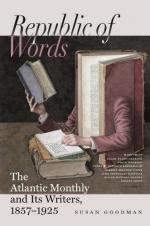If we should try to reason from the rate of past railway-growth as to what the future is to be, we should soon be lost in figures. Thus, in the United States,—
In 1829 there were 3 miles. In 1830 41 miles. In 1840 2167 miles. In 1850 7355 miles. In 1856 23,242 miles.
Thus from 1830 to 1840, the rate is as 2167/41 or 53 nearly; from 1840 to 1850, 7355/2167, or 3 nearly; and from 1850 to 1856, 23242/ 7355 or 3 nearly; and from 1850 to 1860 we may suppose the rate will be about 4. The rate is probably now at its permanent maximum, taking the whole country together,—the increase in New England having nearly ceased, while west of the Mississippi it has not reached its average.
Among the larger and more important roads and connected systems in our country may be named the New York and Erie Railroad,—connecting the city of New York with Lake Erie at Dunkirk, (and, by the road’s diverging from its western terminus, with “all places West and South,” as the bills say,)—crossing the Shawangunk Mountains through the valley of the Neversink, up the Delaware, down the Susquehanna, and through the rich West of the Empire State.
The Pennsylvania Central Road: from Philadelphia through Lancaster to Harrisburg, on the Susquehanna, up the Juniata and down the western slope of the Alleghanies, through rock-cut galleries and over numberless bridges, reaching at last the bluffs where smoky Pittsburg sees the Ohio start on its noble course.
The Baltimore and Ohio Railroad: from Baltimore, in Maryland, to Wheeling and Parkersburg, on the Ohio;—crossing the lowlands to the Washington Junction, thence up the Patapsco, down the Monocacy, to the Potomac; up to Harper’s Ferry, where the Potomac and the Shenandoah chafe the rocky base of the romantic little town perched high above; winding up the North Branch to Cumberland,—the terminus of the Chesapeake and Ohio Canal, and of the great national turnpike to the West, for which Wills’ Creek opened so grand a gate at the narrows,—to Piedmont the foot and Altamont the summit, through Savage Valley and Crabtree Gorge, across the glades, from which the water flows east to the Chesapeake Bay and west to the Gulf of Mexico; down Saltlick Creek, and up the slopes of Cheat River and Laurel Hill, till rivers dwindle to creeks, creeks to rills, and rills lose themselves on the flanks of mountains which bar the passage of everything except the railroad; thence, through tunnels of rock and tunnels of iron, descending Tygart’s Valley to the Monongahela, and thence through a varied but less rugged country to Moundsville, twelve miles below Wheeling, on the Ohio River.
These are our three great roads where engineering skill has triumphed over natural obstacles. We have another class of great lines to which the obstacles were not so much mechanical as financial, —the physical difficulties being quite secondary. Such are the trunk lines from the East to the West,—through Buffalo, Erie, and Cleveland, to Toledo and Detroit, and from Detroit to Chicago, Rock Island, Burlington, Quincy, and St. Louis; from Pittsburg, Wheeling, and Parkersburg, on the Ohio, to Cleveland, Columbus, Cincinnati, Indianapolis, Louisville, and St. Louis; and from Cleveland, through Columbus, to Cincinnati, and from Cincinnati to the Northwest.




